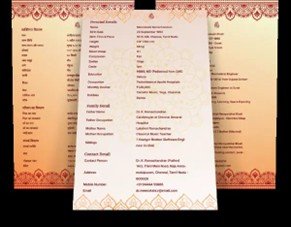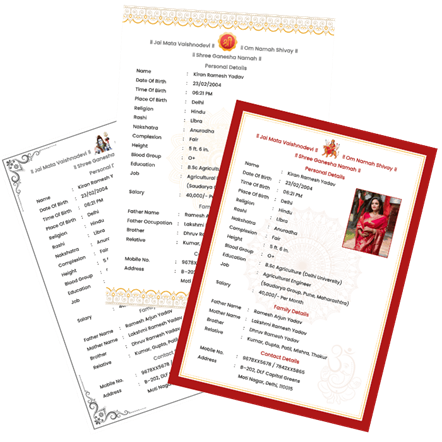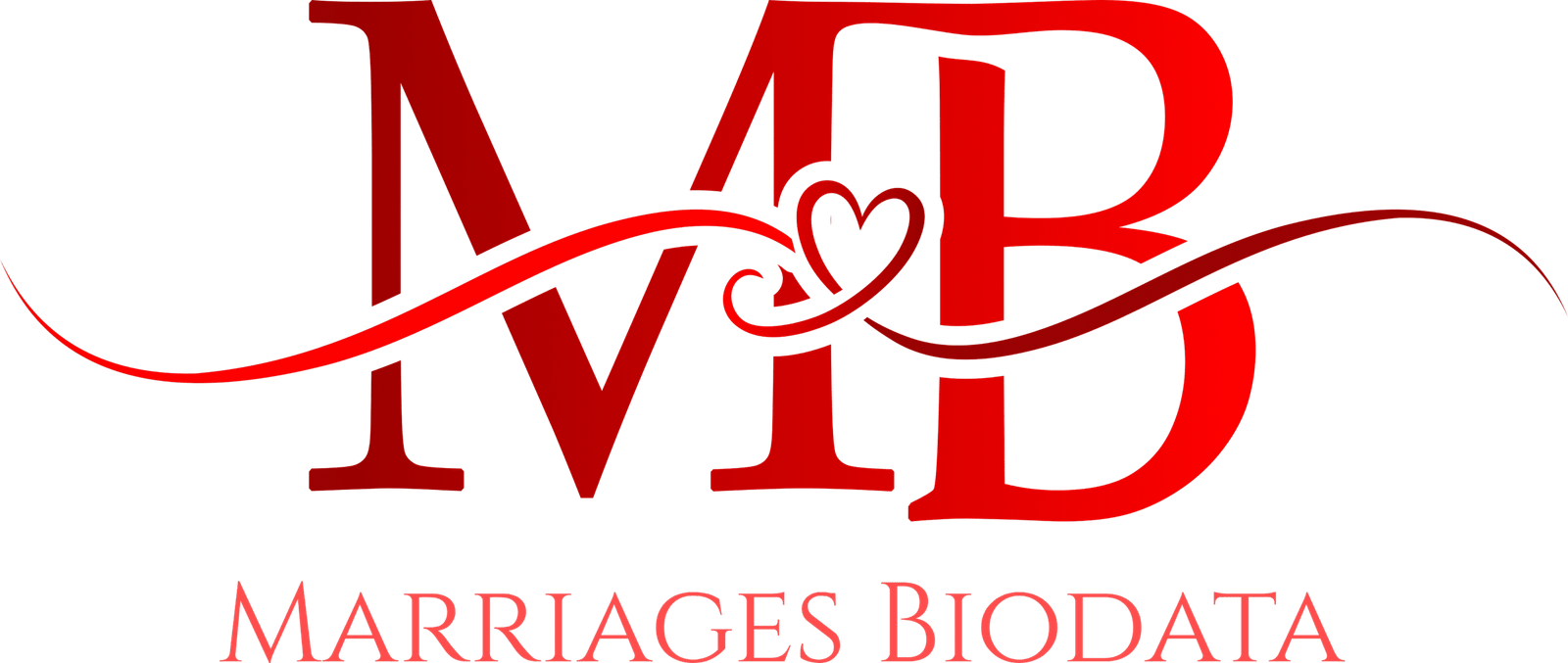When it comes to arranged marriages or matrimonial matchmaking, a well-structured marriage biodata is the first impression you leave on potential partners and their families. A biodata is more than just a resume—it’s a personal profile that reflects your lifestyle, values, background, and preferences. Having an organized and detailed biodata can significantly improve your chances of finding the right match.
In this blog, we’ll walk you through the top 10 things you must include in your marriage biodata, along with useful tips to make it stand out.
Before diving into the essentials, let’s understand why this document matters:
It acts as a personal introduction for matrimonial purposes.
It gives families an overview of your family background, education, career, and lifestyle
It helps in identifying compatibility and shared values before moving to deeper conversations.
Think of it as a concise profile that communicates your personality, background, and expectations clearly and professionally.
Personal Details

The first and most important section of a marriage biodata is your basic personal information. This creates the foundation of your profile.
What to include
- Full Name
- Date of Birth
- Age
- Gender
- Height & Weight
- Blood Group (optional but increasingly common)
- Marital Status (single, divorced, widowed, etc.)
Educational Background
Education plays a significant role in matrimonial matches, especially in today’s professional world. Clearly outlining your academic achievements gives potential partners an idea of your qualifications.
What to include:
Most online marriage biodata makers offer free templates that are customizable, letting you create a professional biodata in minutes.
- Highest Qualification (e.g., MBA, B.Tech, M.Sc.)
- Schooling and College Information
- Additional Certifications or Courses
Professional Details
In most cases, families want to understand your career path and financial stability. Your profession reflects not only your lifestyle but also future plans.
What to include:
- Job Title/Designation
- Company/Organization Name
- Location of Work
- Salary Range (optional)
- Future Career Goals
Family Information
A marriage is not just about two individuals—it connects two families. Hence, sharing clear family details helps in building trust.
What to include:
- Father’s Name & Occupation
- Mother’s Name & Occupation
- Siblings (Names, Occupations, Marital Status)
- Family Values (traditional, moderate, liberal)
- Family Location & Roots
This section should highlight the cultural and social background of the family.
Contact Information

Without clear communication details, a biodata remains incomplete.
What to include:
- Mobile Number
- Email ID
- Residential Address
- Alternative Contact Person (if necessary)
Horoscope Details
For many families in India and abroad, astrological compatibility plays an important role. While this may not be relevant to everyone, it is worth including if your community values horoscopes.
What to include:
- Date, Time, and Place of Birth
- Horoscope/Kundli Chart (optional, can be attached separately)
- Manglik/Non-Manglik Status
Sharing this information adds personality and helps families understand your lifestyle.
Lifestyle & Hobbies
Adding a personal touch to your biodata can make you stand out. Hobbies and lifestyle choices reflect your personality and give potential partners a glimpse into your daily life.
What to include:
- Hobbies (reading, traveling, cooking, painting, music, sports)
- Food Preferences (vegetarian, non-vegetarian, vegan)
- Habits (smoking, drinking—important for transparency)
- Languages Known
Expectations from Partner (Optional)
A marriage biodata should also include your preferences and expectations. This helps filter out incompatible matches at the very beginning.
What to include:
- Achievements & Awards
- Social Work/Volunteering Experience
- Travel Experience
- Special Skills (e.g., fluent in multiple languages, trained musician, certified yoga instructor)
Recent Photographs
A biodata without photos feels incomplete. Including 2–3 recent photographs adds authenticity.
What to include:
- Passport-size photo (formal attire)
- Full-length photo (decent clothing)
- Optional casual photo to reflect personality
Pro Tip: Avoid heavily edited or filtered photos. Natural, well-lit pictures work best.
Additional Information
This section is optional but can be used to add any unique details that reflect your individuality.
Examples of what to add
- Preferred Age Range
- Educational Background Preference
- Professional Preference
- Lifestyle & Value Expectations (traditional, modern, balanced)
- Location Preference (willingness to relocate, work abroad, etc.)
Pro Tip: Keep expectations realistic and respectful. Instead of rigid demands, frame them as preferences.
Final Thoughts
Creating a marriage biodata is about balancing factual details with personal touches. While honesty and clarity are crucial, adding a glimpse of your personality makes your biodata more engaging.
By including these top 10 essential elements, you ensure that your biodata is professional, informative, and appealing—helping you move one step closer to finding the right life partner.
